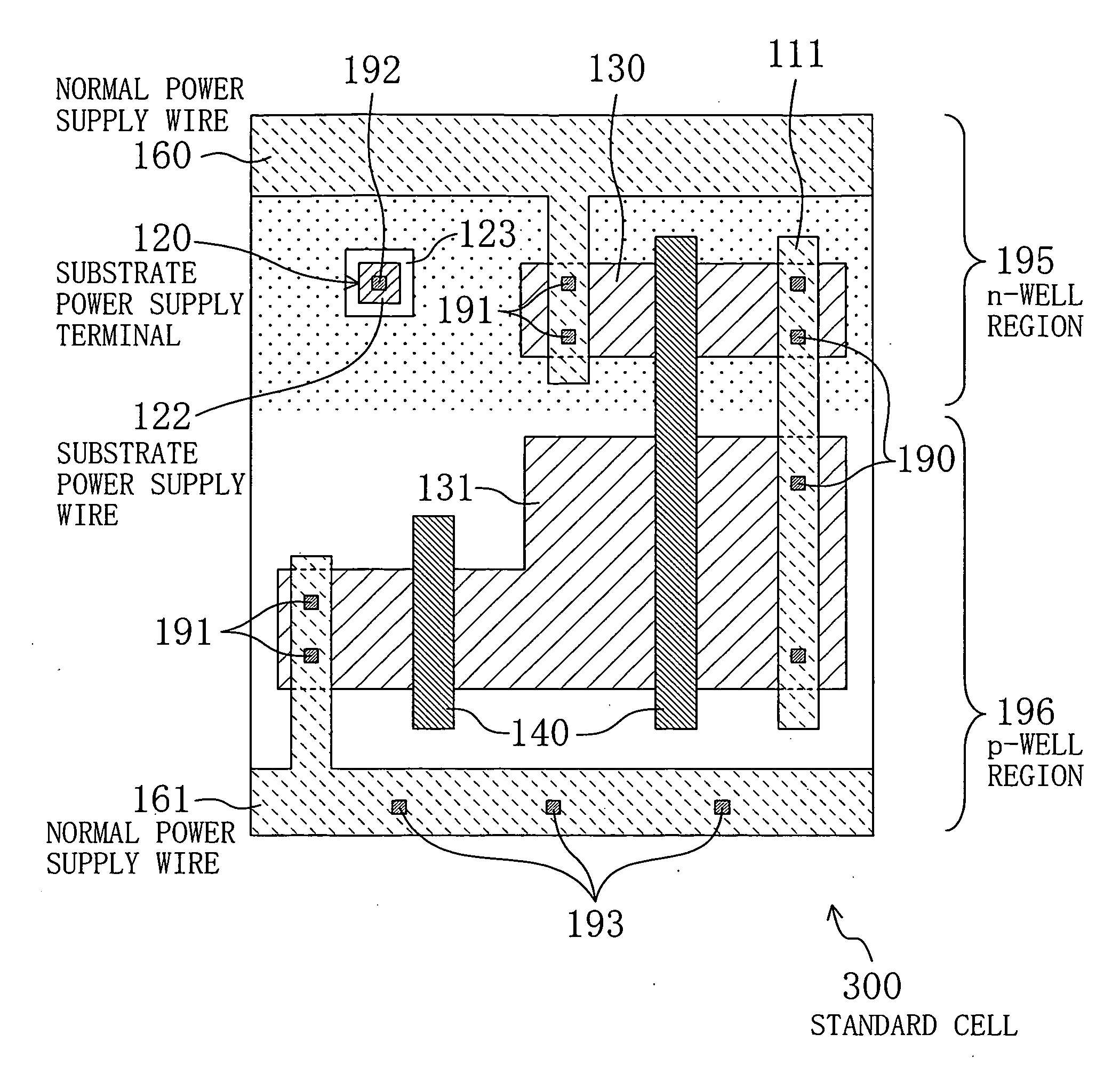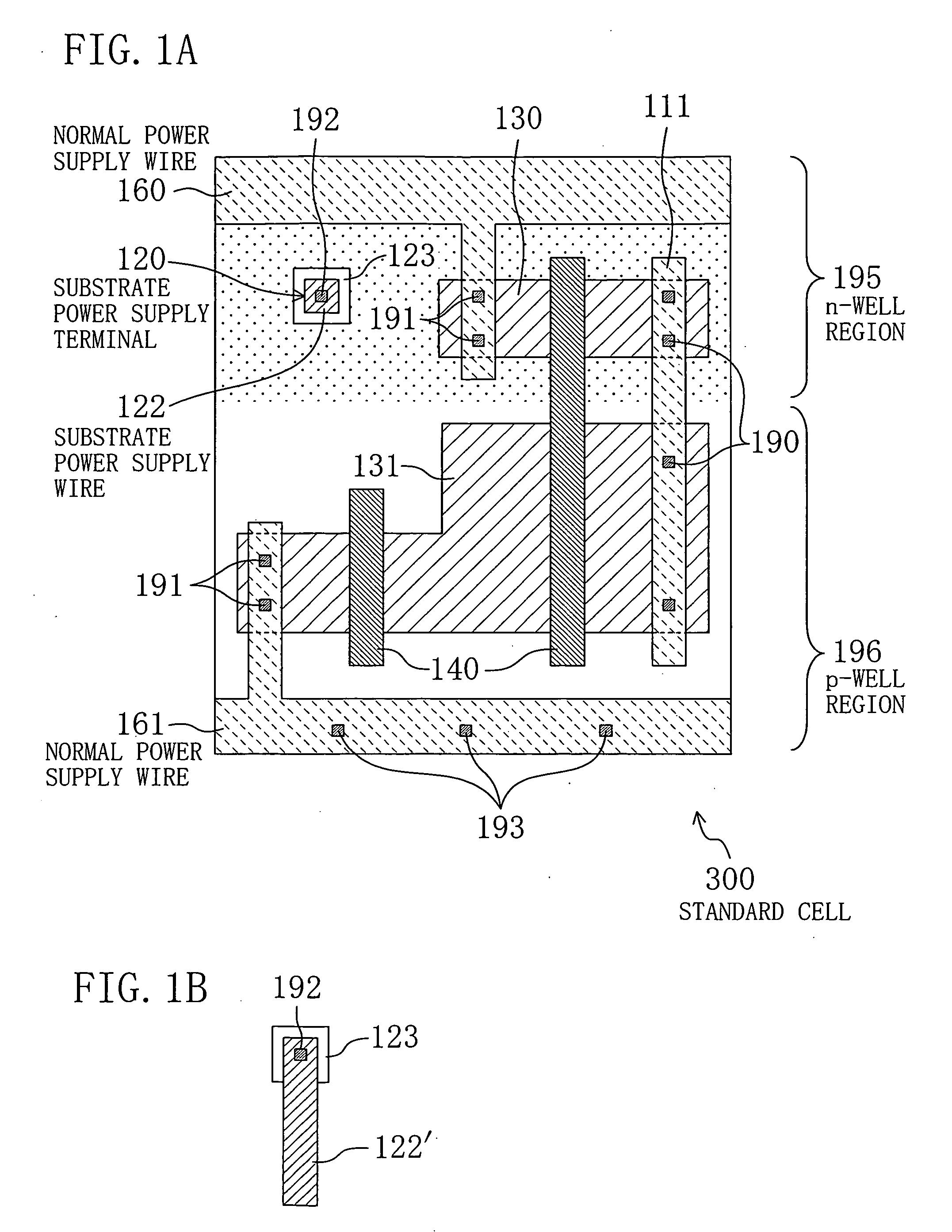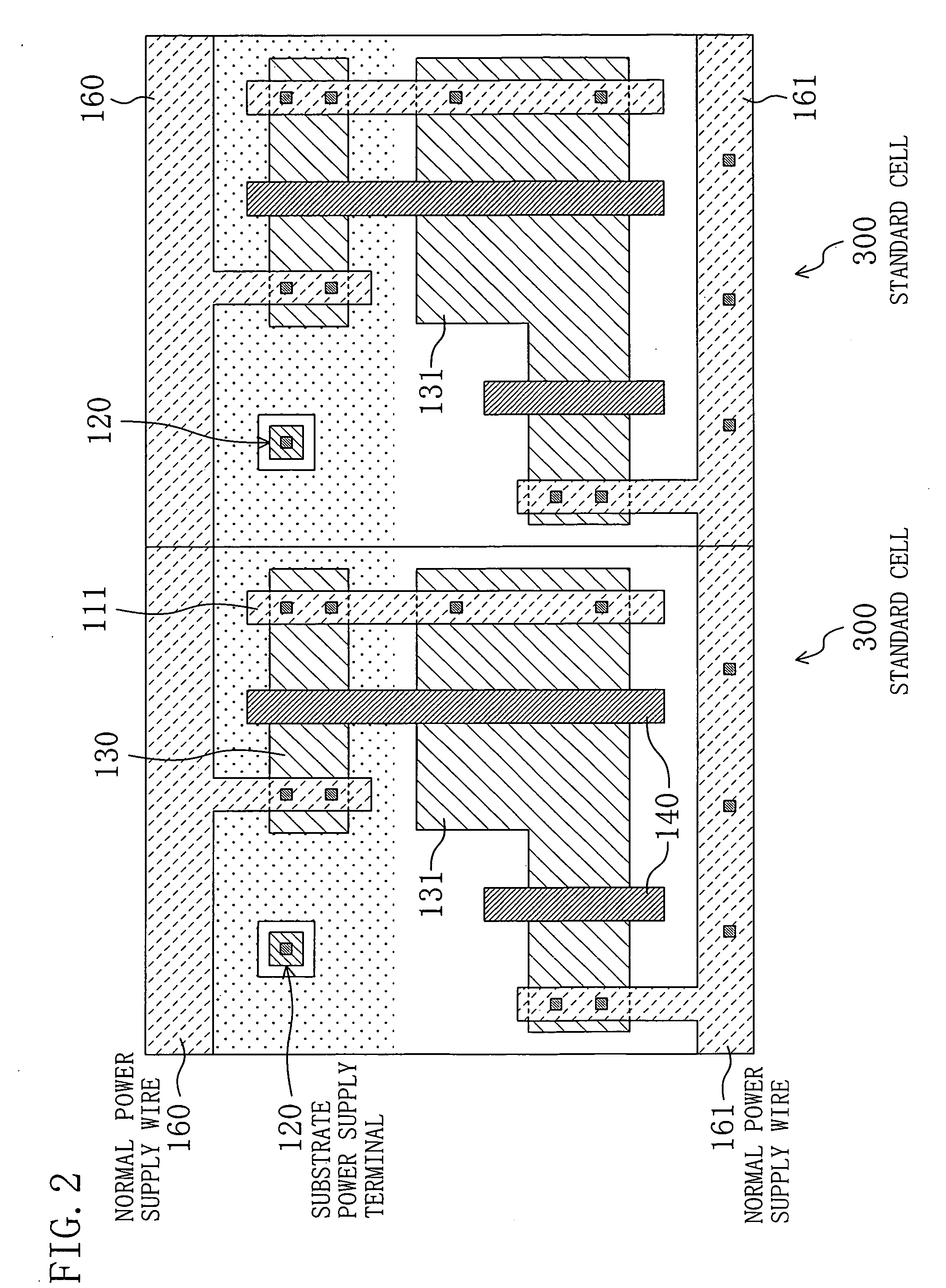Standard cell
a technology of standard cell and layout design, applied in the field of standard cell, can solve the problems of low degree of layout design freedom, low degree of design freedom in the layout design of a standard cell itself, etc., and achieve the effect of simple wiring state, improved degree of freedom of layout design for a standard cell, and high degree of freedom of layout design
- Summary
- Abstract
- Description
- Claims
- Application Information
AI Technical Summary
Benefits of technology
Problems solved by technology
Method used
Image
Examples
first example
[0080] Hereinafter, examples of the present invention will be described with reference to the drawings.
[0081]FIG. 1A illustrates an exemplary standard cell of the present invention. In FIG. 1A, the standard cell 300 is divided into two upper and lower portions, i.e., an n-well region 195 and a p-well region 196. Diffusion layers 130 and 131 are provided in the n-well region 195 and the p-well region 196, respectively. A polysilicon wire 140 is provided on each of the diffusion layers 130 and 131. Also, the polysilicon wire 140 functions as the gates of transistors on each of the diffusion layers 130 and 131. The diffusion layers 130 and 131 are connected through via holes 190 to a metal wire 111. The standard cell 300 also comprises normal power supply wires 160 and 161, and a substrate power supply terminal 120.
[0082] The normal power supply wires 160 and 161 are each a metal wire and are each disposed, extending laterally from a left side to a right side. From the normal power s...
second example
[0097]FIG. 4 illustrates a semiconductor integrated circuit according to a second example of the present invention.
[0098] In FIG. 4, the semiconductor integrated circuit 2999 includes a plurality of standard cell rows 2100 (only seven rows are illustrated in FIG. 4), each of which includes a plurality of standard cells 2000A, 2000B, 2000C, . . . disposed in the same direction (the width direction in FIG. 4). The standard cells 2000A, 2000B, 2000C, . . . have different internal structures, but as illustrated in FIG. 1A, have a common structure in that the normal power supply wires 160 and 161 have the same height position and the same wiring width among the standard cells, and extend in the width direction and disposed into a left side and a right side, and on the other hand, the substrate power supply terminals 120 and 121 are not necessarily formed at the same height position among the standard cells, and are isolated inside not to be disposed into the left side or the right side....
third example
[0123]FIG. 7 illustrates a semiconductor integrated circuit according to a third example of the present invention. Note that, in FIG. 7, the same parts as those of FIG. 4 are indicated by the same reference numerals.
[0124] The semiconductor integrated circuit 3999 of FIG. 7 is different from the semiconductor integrated circuit of FIG. 4 in that inter-cell substrate power supply wires 2013 connect between substrate power supply terminals 2002 of only a portion of a plurality of standard cells 2000. A p-well region and an n-well region of a standard cell 2000 in the semiconductor integrated circuit 3999 of FIG. 7 are shared by standard cells right and left adjacent thereto, respectively, and the substrate potential is the same among the standard cells 2000.
[0125] The semiconductor integrated circuit thus constructed will be hereinafter described.
[0126] The inter-cell substrate power supply wire 2013 of the semiconductor integrated circuit 3999 of FIG. 7 is connected to the substra...
PUM
 Login to View More
Login to View More Abstract
Description
Claims
Application Information
 Login to View More
Login to View More - R&D
- Intellectual Property
- Life Sciences
- Materials
- Tech Scout
- Unparalleled Data Quality
- Higher Quality Content
- 60% Fewer Hallucinations
Browse by: Latest US Patents, China's latest patents, Technical Efficacy Thesaurus, Application Domain, Technology Topic, Popular Technical Reports.
© 2025 PatSnap. All rights reserved.Legal|Privacy policy|Modern Slavery Act Transparency Statement|Sitemap|About US| Contact US: help@patsnap.com



